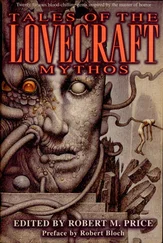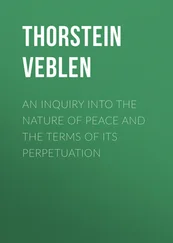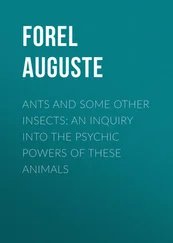Robert Pirsig - Lila. An Inquiry Into Morals
Здесь есть возможность читать онлайн «Robert Pirsig - Lila. An Inquiry Into Morals» весь текст электронной книги совершенно бесплатно (целиком полную версию без сокращений). В некоторых случаях можно слушать аудио, скачать через торрент в формате fb2 и присутствует краткое содержание. Жанр: Современная проза, на английском языке. Описание произведения, (предисловие) а так же отзывы посетителей доступны на портале библиотеки ЛибКат.
- Название:Lila. An Inquiry Into Morals
- Автор:
- Жанр:
- Год:неизвестен
- ISBN:нет данных
- Рейтинг книги:3 / 5. Голосов: 1
-
Избранное:Добавить в избранное
- Отзывы:
-
Ваша оценка:
- 60
- 1
- 2
- 3
- 4
- 5
Lila. An Inquiry Into Morals: краткое содержание, описание и аннотация
Предлагаем к чтению аннотацию, описание, краткое содержание или предисловие (зависит от того, что написал сам автор книги «Lila. An Inquiry Into Morals»). Если вы не нашли необходимую информацию о книге — напишите в комментариях, мы постараемся отыскать её.
Lila. An Inquiry Into Morals — читать онлайн бесплатно полную книгу (весь текст) целиком
Ниже представлен текст книги, разбитый по страницам. Система сохранения места последней прочитанной страницы, позволяет с удобством читать онлайн бесплатно книгу «Lila. An Inquiry Into Morals», без необходимости каждый раз заново искать на чём Вы остановились. Поставьте закладку, и сможете в любой момент перейти на страницу, на которой закончили чтение.
Интервал:
Закладка:
Many others reported cultural correlations of the symptoms of insanity. M. K. Opler found that Irish schizophrenic patients had preoccupations with sin and guilt related to sex. Not Italians. Italians were given to hypochondriacal complaints and body preoccupations. There was more open rejection of authority among Italians. Clifford Geertz stated that the Balinese definition of a madman is someone who, like an American, smiles when there is nothing to smile at. In one journal Phædrus found a description of different psychoses which were specialized according to culture: the Chippewa-Cree suffered from windigo, a form of cannibalism; in Japan there was imu, a cursing following snake-bite; among Polar Eskimos it is pibloktog, a tearing off of clothes and running across the ice; and in Indonesia was the famous amok, a brooding depression which succeeds to a dangerous explosion of violence.
Anthropologists found that schizophrenia is strongest among those whose ties with the cultural traditions are weakest: drug users, intellectuals, immigrants, students in their first year at college, soldiers recently inducted.
A study of Norwegian-born immigrants in Minnesota showed that over a period of four decades their rate of hospitalization for mental disorders was much higher than those for either non-immigrant Americans or Norwegians in Norway. Isaac Frost found that psychoses often develop among foreign domestic servants in Britain, usually within eighteen months of their arrival.
These psychoses, which are an extreme form of culture shock, emerge among these people because the cultural definition of values which underlies their sanity has been changed. It was not an awareness of truth that was sustaining their sanity, it was their sureness of their cultural directives.
Now, psychiatry can’t really deal with all of this because it is pinioned to a subject-object truth system which declares that one particular intellectual pattern is real and all others are illusions. Psychiatry is forced to take this position in contradiction to history, which shows over and over again that one era’s illusions become another era’s truths, and in contradiction to geography, which shows that one area’s truths are another area’s illusions. But a philosophy of insanity generated by a Metaphysics of Quality states that all these conflicting intellectual truths are just value patterns. One can vary from a particular common historical and geographical truth pattern without being crazy.
The anthropologists established a second point: not only does insanity vary from culture to culture, but sanity itself also varies from culture to culture. They found that the ability to see reality is not only a difference between the sane and the insane, it is also a difference between different cultures of the sane. Each culture presumes its beliefs correspond to some sort of external reality, but a geography of religious beliefs shows that this external reality can be just about any damn thing. Even the facts that people observe to confirm the truth are dependent on the culture they live in.
Categories that are unessential to a given culture, Boas said, will, on the whole, not be found in its language. Categories that are culturally important will be found in detail. Ruth Benedict, who was Boas' student, stated:
The cultural pattern of any civilization makes use of a certain segment of the great arc of potential human purposes and motivations just as… any culture makes use of certain selected material techniques or cultural traits. The great arc along which all the possible human behaviors are distributed is far too immense and too full of contradictions for any one culture to utilize even any considerable portion of it. Selection is the first requirement. Without selection no culture could even achieve intelligibility and the intentions it selects and makes its own are a much more important matter than the particular detail of technology or the marriage formality that it also selects in similar fashion.
A child in a money-society will draw pictures of coins that are larger than a child in a primitive culture. Moreover the money-society children overestimate the size of a coin in proportion to the value of the coin. Poor children will overestimate more than rich ones.
Eskimos see sixteen different forms of ice which are as different to them as trees and shrubs are different to us. Hindus, on the other hand, use the same term for both ice and snow. Creek and Natchez Indians do not distinguish yellow from green. Similarly, Choctaw, Tunica, the Keresian Pueblo Indians and many other people make no terminological distinction between blue and green. The Hopis have no word for time.
Edward Sapir said,
The fact of the matter is that the real world is to a large extent unconsciously built up on the language habits of the group… Forms and significances which seem obvious to an outsider will be denied outright by those who carry out the patterns; outlines and implications that are perfectly clear to these may be absent to the eye of the onlooker.
As Kluckhohn put it,
Any language is more than an instrument of conveying ideas, more even than an instrument for working upon the feelings of others and for self-expression. Every language is also a means of categorizing experience. The events of the real world are never felt or reported as a machine would do it. There is a selection process and an interpretation in the very act of response. Some features of the external situation are highlighted, others are ignored or not fully discriminated.
Every people has its own characteristic class in which individuals pigeonhole their experiences. The language says, as it were, notice this , always consider this separate from that , such and such things always belong together. Since persons are trained from infancy to respond in these ways they take such discriminations for granted as part of the inescapable stuff of life.
That explained a lot of what Phædrus had heard on the psychiatric wards. What the patients showed wasn’t any one common characteristic but an absence of one. What was absent was the kind of standard social role-playing that normal people get into. Sane people don’t realize what a bunch of role-players they are, but the insane see this role-playing and resent it.
There was a famous experiment where a sane person went onto a ward disguised as insane. The staff never detected his act, but the other patients did. The patients saw he was acting. The hospital staff, who were playing standard social roles of their own, couldn’t detect the difference.
Insanity as an absence of common characteristics is also demonstrated by the Rorschach ink-blot test for schizophrenia. In this test, randomly formed ink splotches are shown to the patient and he is asked what he sees. If he says, I see a pretty lady with a flowering hat, that is not a sign of schizophrenia. But if he says, All I see is an ink-blot, he is showing signs of schizophrenia. The person who responds with the most elaborate lie gets the highest score for sanity. The person who tells the absolute truth does not. Sanity is not truth. Sanity is conformity to what is socially expected. Truth is sometimes in conformity, sometimes not.
Phædrus had adopted the term static filter for this phenomenon. He saw that this static filter operates at all levels. When, for example, someone praises your home town or family or ideas you believe that and remember it, but when someone condemns these institutions you get angry and condemn him and dismiss what he has said and forget it. Your static value system filters out the undesirable opinions and preserves the desirable ones.
But it isn’t just opinions that get filtered out. It’s also data. When you buy a certain model of car you may be amazed at how the highways fill up with other people driving the same model. Because you now value this model more you now see more of it.
Читать дальшеИнтервал:
Закладка:
Похожие книги на «Lila. An Inquiry Into Morals»
Представляем Вашему вниманию похожие книги на «Lila. An Inquiry Into Morals» списком для выбора. Мы отобрали схожую по названию и смыслу литературу в надежде предоставить читателям больше вариантов отыскать новые, интересные, ещё непрочитанные произведения.
Обсуждение, отзывы о книге «Lila. An Inquiry Into Morals» и просто собственные мнения читателей. Оставьте ваши комментарии, напишите, что Вы думаете о произведении, его смысле или главных героях. Укажите что конкретно понравилось, а что нет, и почему Вы так считаете.











